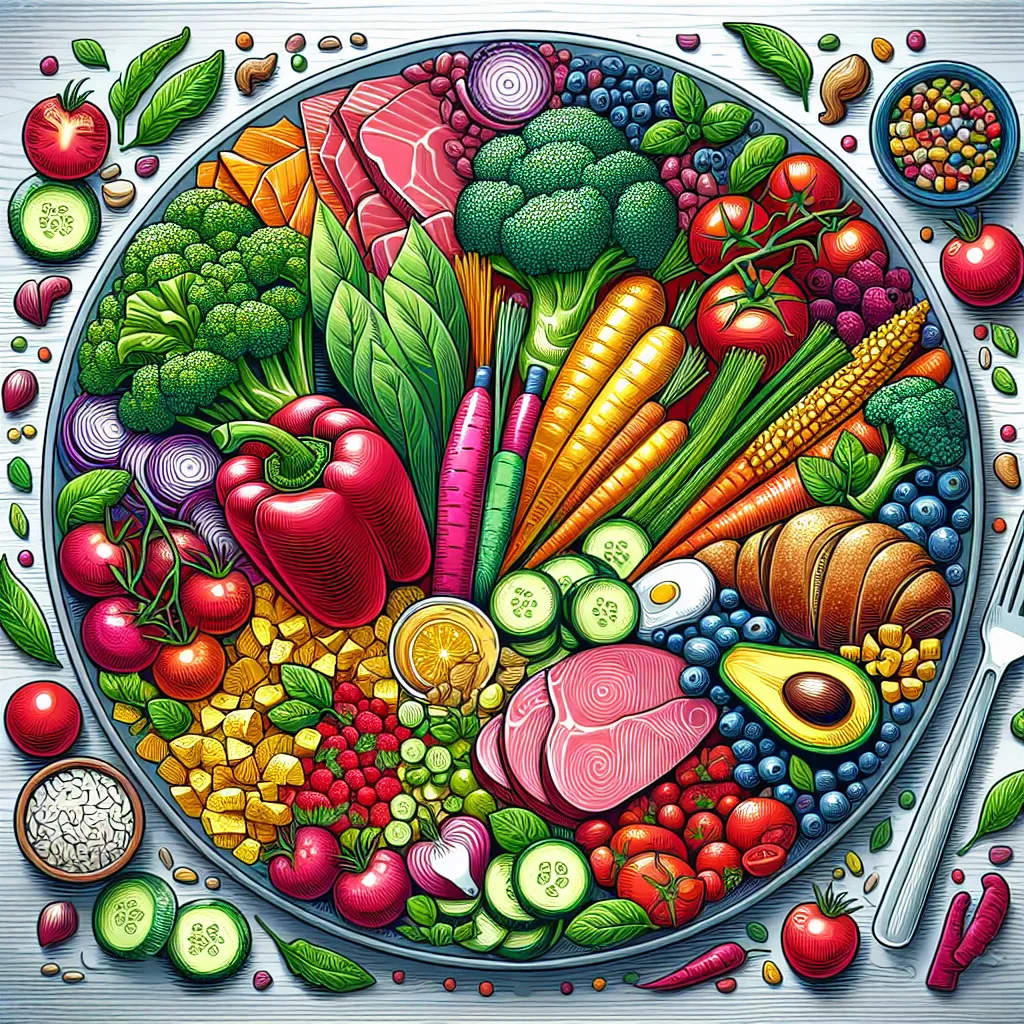Simple Strategies for Creating Well-Balanced Meals
Creating well-balanced meals doesn’t have to be complicated. With a few simple strategies, you can easily plan and prepare meals that provide the nutrients your body needs. One approach is to use the “plate method,” which involves dividing your plate into sections for different food groups. Aim to fill half your plate with vegetables and fruits, one-quarter with lean proteins such as chicken, fish, or tofu, and the remaining quarter with whole grains or starchy vegetables like sweet potatoes. This method ensures a good mix of nutrients and helps control portion sizes.
Another helpful strategy is to incorporate a variety of colors onto your plate. Different colored fruits and vegetables contain different vitamins, minerals, and antioxidants, so by including a rainbow of produce, you can maximize the nutritional content of your meals. Additionally, don’t forget the importance of healthy fats, such as those found in avocado, nuts, and olive oil. Including a small amount of healthy fats in your meals not only adds flavor but also helps your body absorb fat-soluble vitamins.
Planning ahead is also key to creating well-balanced meals. Take some time at the beginning of each week to outline a menu and create a shopping list. Having a plan in place makes it easier to resist the temptation of unhealthy convenience foods when hunger strikes. Additionally, preparing larger batches of meals ahead of time can save you time during the week and ensure you always have a nutritious option on hand.
By implementing these simple strategies, you can take the stress out of meal planning and feel confident that you are providing your body with the nutrients it needs to thrive. Balanced meal planning doesn’t have to be overwhelming—with a little thought and preparation, you can enjoy delicious and nourishing meals every day.
Key Components of a Nutritious and Satisfying Meal Plan
Sure, here’s a fragment of the article focusing on the key components of a nutritious and satisfying meal plan:
When it comes to creating a balanced meal plan, it’s crucial to include key components that provide essential nutrients and ensure satisfaction. A nutritious meal plan should consist of a variety of foods that cover the main food groups, including lean proteins, whole grains, healthy fats, fruits, and vegetables. These components offer a wide range of nutrients such as protein, fiber, vitamins, and minerals, which are vital for overall health.
In addition to the main food groups, it’s important to consider portion sizes and the balance of macronutrients. A well-balanced meal plan should include appropriate portion sizes to meet individual caloric and nutritional needs. Furthermore, incorporating a balance of carbohydrates, proteins, and fats ensures that meals are not only nutritious but also satisfying, keeping hunger at bay and providing sustained energy throughout the day.
Moreover, a key component of a satisfying meal plan is the inclusion of flavorful and enjoyable foods. Incorporating a variety of herbs, spices, and healthy condiments can enhance the taste of meals without compromising their nutritional value. This ensures that the meal plan is not only nourishing but also pleasurable, promoting long-term adherence and overall satisfaction.
This fragment includes information on the main components of a balanced meal plan, including essential food groups, portion sizes, macronutrient balance, and the importance of flavorful foods.
Effortless Tips for Achieving Balanced Meal Prep
When it comes to balanced meal planning, the key is to make the process as effortless as possible. By incorporating some simple tips and tricks into your routine, achieving balanced meal prep can become much more manageable.
One essential tip is to start with a well-thought-out grocery list. This ensures that you have all the necessary ingredients on hand, making it easier to stick to your meal plan. Additionally, consider prepping some basic ingredients in advance, such as washing and chopping vegetables, cooking grains, or marinating proteins. This can save precious time during the busy weekdays.
Another effortless way to incorporate balanced meals into your routine is by embracing one-pan or one-pot recipes. These often require minimal preparation and result in a delicious, well-rounded meal. Additionally, consider utilizing leftovers creatively by transforming them into new dishes, reducing food waste while maintaining a balanced diet.
Utilizing time-saving kitchen gadgets, such as a slow cooker or Instant Pot, can also streamline the meal prep process. These appliances make it easy to cook healthy, balanced meals with minimal effort, perfect for those with busy schedules.
By incorporating these effortless tips into your meal planning routine, achieving a balanced and nutritious diet becomes much more manageable, ensuring that you have the energy and nourishment you need to tackle your day.

